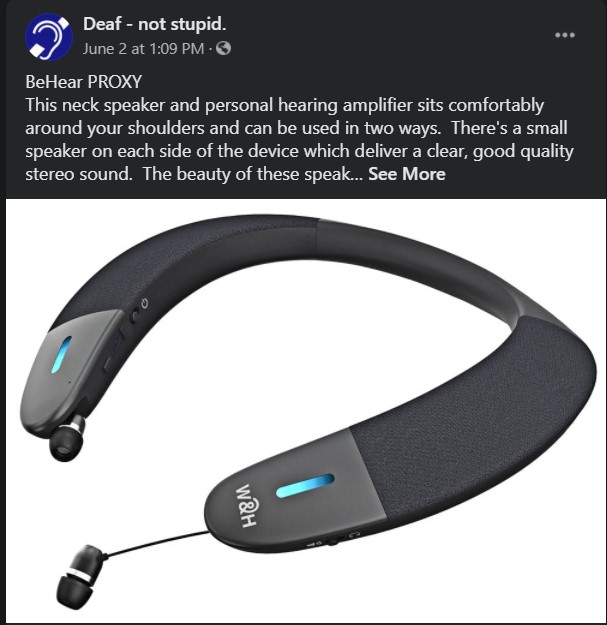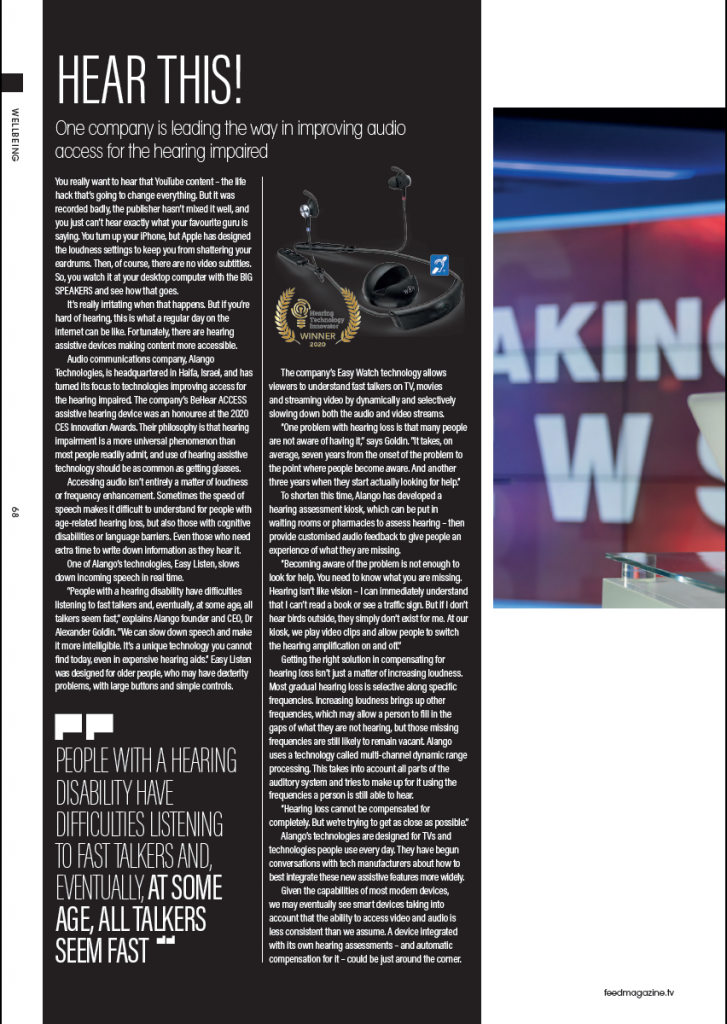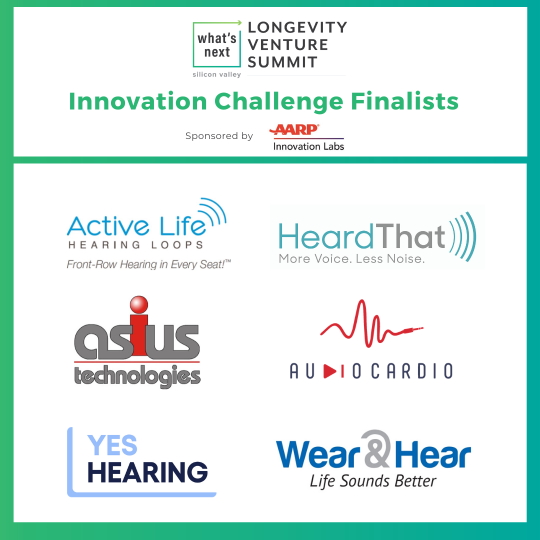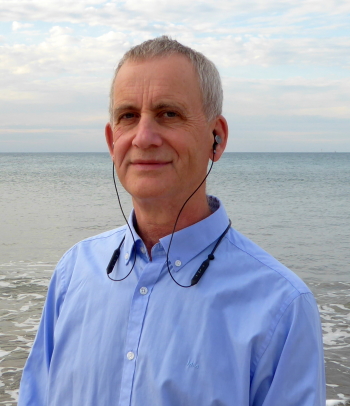“SMARTO has changed my life: I can hear again!” claims a 94-year-old woman who finds this new hearing amplifier superior to her hearing aids
Alango releases BeHear SMARTO, a simple yet powerful programmable hearing amplifier with Bluetooth® connectivity
Alango Technologies, a leading independent provider of DSP speech and audio enhancement software technologies for the communications industry, today announced the launch of BeHear® SMARTO, a hand-held or body worn hearing amplifier with Bluetooth® connectivity for people with mild to severe hearing problems. SMARTO features Alango’s award-winning technology that enhances hearing and reduces background noise to clarify speech in live conversations, cell phone and video calls, and TV programs.
You Have Given Me Back My Life!
Last year Elaine B. was fitted with hearing aids to address her profound hearing loss. Although they allowed her to communicate with family members, due to discomfort she could not wear them for extended periods. Furthermore, they were not helpful for television, obliging her to find a separate device for TV watching. Adding to the complexity of the solution, Mrs. B. had difficulty charging the devices, as her vision was also failing. Mrs. B. agreed to try the new BeHear SMARTO, which was designed specifically for people who need significant amplification with minimal effort. Her enthusiasm for the new product can be felt in her video testimonial, where she exclaims “You have given me back my life!”.
Advanced Hearing Aid Technology at an Affordable Price
SMARTO provides accessible, affordable, programmable hearing enhancement for people who, for whatever reason, do not use hearing aids. Alango’s proprietary technology offers much more than just sound amplification. Sophisticated algorithms separate speech from noise, adjust the strength of different frequencies to match the user’s preferences, and focus the sound input to zero-in on a specific speaker. Another unique feature allows the user to slow down incoming speech on cell phone calls to improve intelligibility. SMARTO also includes a user-customizable noise generator as sound therapy for relief of tinnitus, or “ringing in the ears”.
Key Benefits of the SMARTO Hearing Amplifier
- Simple and effective: With large, colorful buttons for easy operation, SMARTO is suitable for people who have limited mobility, vision, dexterity, or dementia.
- Loud and clear mobile calls: Comprehension during cell calls is increased due to personalized amplification, noise reduction technology, and Alango’s EasyListen™ feature, which slows down incoming speech, when desired.
- Superior audio quality: Bluetooth 5.0 support ensures that clear dialogue and rich music tones from streamed TV programs, music tracks, podcasts, conference calls and other audio content are delivered directly to the SMARTO headset.
- Directionality: In challenging, noisy conditions users can activate “focus mode”, point the device towards a particular person, and benefit from selective amplification in the direction of interest.
- Tailored amplification: Conversation isn’t just louder; it is adapted to suit the user’s unique hearing profile.
- Built-in safety feature: A custom emergency call option that can be triggered with a single button press makes it easy for the user to call for help and provides peace of mind for family members.
- Tinnitus relief therapy: Customizable masking sounds can ease the discomfort of tinnitus.
Hearing Professionals, Caregivers, and Family Members Will Also Benefit
“Age-related hearing loss is extremely frustrating for seniors, their families, and their caregivers, but hearing aids are not providing the solution for the majority of those affected,” notes Alango’s CEO and Founder, Dr. Alexander Goldin. “So, we created BeHear SMARTO, an accessible, affordable, and easy way for seniors to stay connected. We hope hearing professionals, caregivers, and family members will encourage seniors to communicate with SMARTO, for everyone’s benefit.”
Availability
BeHear SMARTO is now available commercially for $189 (€189 in Europe and the U.K.) through BeHear’s international distribution channel, Best Buy online, Walmart online, Amazon, and the BeHear Web site.
About Alango Technologies
Alango Technologies, Ltd. (www.alango.com) has been developing sound enhancement technologies since 2002, selling over 60 million software licenses that improve the audio experience in automotive, entertainment, and smart home applications around the world. Realizing the importance and opportunity of combining the sound enhancement technology found in hearing aids with the advances and costs in the consumer electronics world, the Company is now using its field-proven expertise in sound technology to create products for personal hearing enhancement: the “BeHear” product line (www.alango-behear.com). With over 10,000 BeHear units sold to date, the direction is clear: people want inexpensive, stylish, multi-functional, and self-fit solutions to keep them in the conversation.
#
BeHear is a registered trademark of Alango Technologies, Ltd. in the United States. All other trademarks are the property of their respective holders.
BeHear ACCESS II with tinnitus masking is an excellent hearing enhancement device
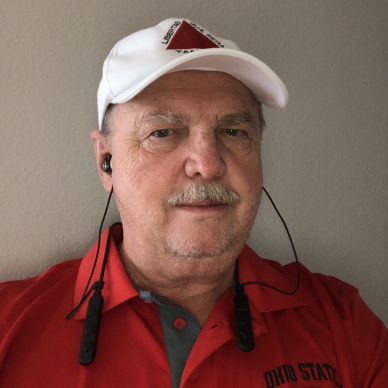
Michael Hayes, a long-time BeHear NOW user, learned that the new BeHear ACCESS model includes a feature designed to reduce the effects of tinnitus. He wrote us:
I have suffered from moderate hearing loss accompanied by tinnitus in my left ear for over 50 years due to inner ear nerve damage from an infection. Over the past 5 years I have experienced a measurable decrease in hearing in my right ear and an accompanying increase in tinnitus in that ear as well. I have tried numerous hearing aids over the years but none of them provided me with any improvement for my left ear and no reduction in tinnitus. Only when I tried the BeHear NOW with the personalized modulation technology that I gained some improvement in my left ear hearing.
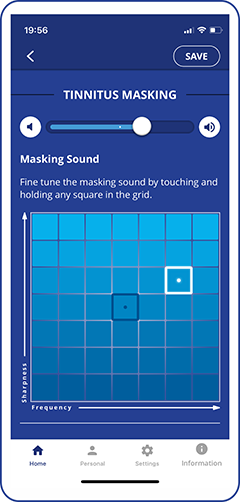
I installed the new BeHear ACCESS II application and ran the self test, set up my hearing profile, and then began the fine tuning of the tinnitus masking function. The setup was intuitive and within a few minutes I had chosen a masking tone that seemed to work best for both ears. The tinnitus masking function works well, albeit somewhat better for my right ear that has better natural hearing than my left ear that has the severe nerve damage.
In summary the BeHear ACCESS II with tinnitus masking is an excellent hearing enhancement device that I highly recommend for anyone who suffers from hearing loss and tinnitus.
I have experimented with far more expensive devices, (hearing aids), that in my opinion were inferior in performance to the Access II.
Michael Hayes, satisfied BeHear ACCESS customer
In conclusion, Michael states: “I am grateful to the staff at Alango for their dedication to hearing enhancement beyond the ordinary.”
Tinnitus Masking Therapy in BeHear
To learn more about the tinnitus sound therapy supported by BeHear ACCESS model II, watch the video below:
I listen in appreciation of the full sound which I have been missing for so long.
Just wanted to thank you and let you know just how much I am enjoying listening to my music collection with BeHear ACCESS. One of my grandsons encouraged me to sign up with Apple Music ($10/month) about a month ago. With this service I can ask Siri to play just about any piece of music ever recorded, giving the title of the piece and the artist or orchestra, and on it comes. I listen in appreciation of the full sound which I have been missing for so long. I then have the option to record the piece my library in my iPhone and can play it whenever I like.
Well, whenever I have the time and of late that is almost some time every day; I take a break from what I am doing and just listen. The majority of music I listen to is Jazz from my teen years – the big bands. The lyrics to these tunes are still in my head for some reason. This is such joy! Thank you.
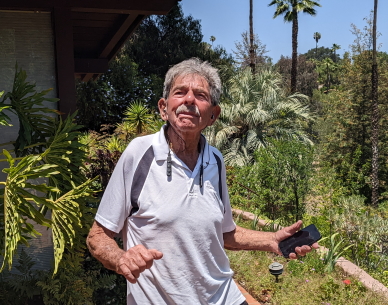
Compared to $4,000 for other hearing aids, this is a steal!
For an old dude like me who just wants to listen to the B-52s, talk on the phone, and hear the cat meowing to be let inside the house, the BeHear ACCESS is a pretty good fit.
Kevin Knauss, health insurance agent
Kevin Knauss is an independent agent for health insurance in California. He posts detailed and informative articles on his Web site https://insuremekevin.com.
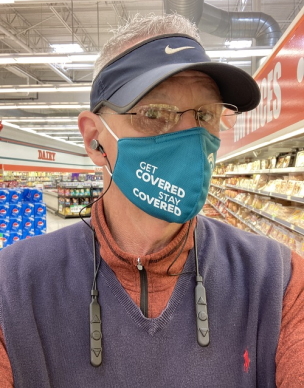
In a recent post he reviewed BeHear ACCESS, complete with a humorous video testimonial (see below).
Here is Kevin’s summary of the BeHear ACCESS personal hearing amplifier:
- The music quality is very good. They are better than my really inexpensive wireless ear buds, probably not as good as some of the super expensive wireless ear buds on the market.
- Phone call quality is very good. No one has complained that they cannot understand me, an issue with some earbuds. I hear all of the callers very well. The sound seems a little heavy on the bass or light on the treble side.
- Hearing amplification is good. I have no experience with professionally fitted hearing aids that cost $2,000 to $5,000. Those products may replicate a more natural sound than the BeHear ACCESS.
Kevin took the time to document his experience with BeHear ACCESS in this very entertaining and informative YouTube video:
For more insights from Kevin, read his full article here.
I can now hear what is being said!
I believe in the product so much that I emailed all of my friends and recommended the product highly to them.
Robert W. from North Carolina
For quite a while I had a problem with my hearing that caused me to not be able to understand what was being said when at the movie theater, watching TV, and in crowds or in areas that had background sounds.

I tried several things to remedy the problem, including:
- turning the TV up so loud that it was hurting my ears (as well as those around me)
- getting low quality headphones that were attenuated to the higher frequencies
- I even purchased an amplifier that had a manual equalizer built in (so that I could tune the output to increase the frequencies that I was deficient in).
I never got around to hooking up the amp because I found WearandHear.com and after reading the reviews I decided to give the BeHear NOW a shot at helping me hear better. So, I purchased one.
I am glad to say that it was money well spent as I can now hear what is being said in all of the circumstances that were giving me extreme problems before.
The attribute that I like best is being able to set up profiles that are suited specifically for me for the different circumstances that I encounter. A profile for TV, a profile for the Movie Theater, a profile for crowds, a profile for areas that have background sounds, etc.
You may ask if I would recommend the WearandHear products. The answer is a definite yes. As a matter of fact, I believe in the product so much that I emailed all of my friends and recommended the product highly to them.
Is BeHear the perfect hearing solution?
Yes, the BeHear is a wonderful product. You won’t go wrong with it. Is it the perfect solution? No, but I’ve yet to find one and I’ve got friends that have the $5000-6000 hearing aids and I’m not sure that they’re hearing any better than I am with this.
Renny Spencer, photographer and paramedic
Between being a photographer for mainly for my own enjoyment and sometimes for others. I’m glad some of y’all enjoy seeing my photography as well also I’m a paramedic. I need my ears to be able to hear people, so between everything I do with family friends and my religious activities everything involved in work, hearing is something very important to me and so it’s been a challenge.
I’ve had hearing aids off and on for over 30 years now and should have probably had them even before that. I’ve never been happy with what I get, not been happy with what we’ve been, you know, how we hear, what’s involved, the various things that go on, and so I continued looking. The high dollar hearing aids didn’t do me much better than, you know, some of the cheaper ones. But I was able to locate this BeHear device.
It’s nice, it’s simple, it’s comfortable, serves multi-purposes. I’m able to use my phone off of it. I can listen to my music off my phone. When I’m outdoors and photographing I’m able to hear the birds, hear the deer walking, snorting things, that I miss a lot of times when I just use my ears without any hearing aid or hearing device. It’s been a wonderful product. It’s very simple.
Let me take mine off here. Good thing no one’s talking to me because I would have more difficulty hearing and understanding. I’d realize you’re talking but I’ve got that bad habit of just nodding my head and saying yes even though I don’t hear real well.
This is a really simple device. It’s easy to use. It functions well. I’ve been very happy with it. There are, you know, a few things. Like any device it’s not perfect but being able to hear my grandchildren. Being able to hear my wife most of the time (unless she’s mad at me) comes in real handy. It’s really beneficial when I’m working on the ambulance for my patients. I can hear them. I do have to take it off in order to use the device I use to be able to auscultate a patient’s heart and lung sounds.
The other things about it I like: it’s simple. You’ve got one button for on/off. You’ve got controls on either side. The Web site on BeHear gives you much better instructions. I’ll let them explain how it all works.
I do encourage you to try this out if you have hearing issues. The biggest issue I had was where you plug in to charge: it failed with my first set of BeHear. I contacted BeHear. Within just a short time they shipped me a new set along with the return label for the set that I had gotten, so I’ve got this set now. What I did to avoid that problem is I use a magnetic charger. It’s very simple and if you leave an insert in there and then it just clips on. (I’ll try to remember to actually place that in my YouTube video the link to this) but that allows it where I don’t have that wear and tear and chance of breaking that connection because that’s what happened last time, and I’ve had this happen on my cell phones and that’s where I had learned about these devices, as well.
So, do I recommend BeHear? Yes sir, yes ma’am, yes everyone, I do. I’d say I don’t get on camera, I hide behind the cameras, that’s just my preference, but I wanted to get on here long enough to tell you.
So, I do appreciate your time and I hope if you check this out, that you’re as happy and satisfied as I am. You have a great day now and enjoy hearing again!
Why use a neck speaker with hearing aids?
Use BeHear PROXY neck speaker with hearing aids, slow down the speech in real time or run the hearing test with the W&H app.
The Facebook community HoH DEAF NOT STUPID posts and discusses resources and organizations that are of use to deaf and hard of hearing people. This is the review they posted about BeHear PROXY.
This neck speaker and personal hearing amplifier sits comfortably around your shoulders and can be used in two ways. There’s a small speaker on each side of the device which deliver a clear, good quality stereo sound. The beauty of these speakers is that you can use them in conjunction with your hearing aids to tailor the sound to your requirement. The device doesn’t transmit audio for reception via the aids’ T switch so you use the aids’ microphones. There’s a pair of volume control buttons on the right-hand side of the device, which can amplify at up to about 105 dB. The downside is that anyone in your vicinity can also hear the output.
A pair of extractable earbuds is housed, one in each arm of the device. Pull them out to use them and press buttons for them to be automatically retracted into their housing. The technical specification of the device rates the output of these earbuds at up to about 105 dB. Our experience with them was that, whilst hearing people found their output satisfactory, people who are hard of hearing had difficulty with them – and, of course, you have to remove your aids to use the earbuds.
The PROXY is Bluetooth enabled, with a range of up to about ten meters, and can support two simultaneously connected devices – say the TV and your phone (if your TV isn’t Bluetooth enabled, you can purchase a Bluetooth transmitter to attach to it).
When used in conjunction with your Smartphone you’d need to use the earbuds for call privacy and, as already mentioned, this might pose a problem for Hard of Hearing users. The two buttons previously mentioned control the call volume. Between the two volume buttons is a third, multi-purpose button. This button is used, depending on the length and number of presses, to reject, accept and end calls and to redial the last number. A built-in microphone makes incoming calls hands free and also enables the amplification of in-room conversations when the earbuds are used and also allow you to hear ambient sounds whilst listening to music.
A Smartphone app. has a feature that lets you slow down incoming speech slightly, to improve intelligibility. The same app. lets you tailor the PROXY to your own requirements, running your own hearing test and turning features on and off.
When listening to music, possibly streamed from your Smartphone, depending on the length of your press, the volume buttons can also be use to skip to the next or previous track. The center button pauses and plays the audio.
The device is powered by an internal rechargeable battery with a charging time of about three hours. When using the loudspeakers, a full charge gives about ten hours listening and, with the earbuds, about forty hours. A USB charging lead is supplied.
The BeHear PROXY is marketed by Wear & Hear at $189 including a one-year warranty and free worldwide shipping. A thirty-day free trial is available.
“Quit yelling at the people in the supermarket for the wrong reasons,” says Mr. Berger after trying his new hearing device.
In this interesting BeHear NOW review Robert M. Berger provides his perspective on hearing aids, overpriced hearing devices, and explains why BeHear NOW fulfills his hearing requirements.
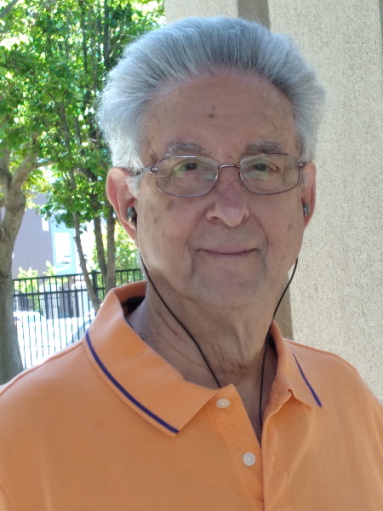
My hearing has been fading for several years and recently I began shopping for a fix. I was appalled at the pricing of established hearing aids but heard that the U.S. government was now allowing certain categories of hearing devices to be sold over the counter and the market responded with several offerings at various prices. After an investigation of the pros and cons of each, I selected the Wear & Hear brand because of the messages on their home site and they met the needs of my hearing problem which were:
- It must customize to an audiogram. WH tests you on their app and adjusts to the results.
- I wanted a device where I could fine tune the sound. WH does that.
- It must be rechargeable. No batteries. WH is rechargeable and gives you multiple warnings when the battery is low.
- I wanted it to adjust for different environments. WH does indoor, outdoor, crowds and music modes.
- I wanted easily adjustable volume. I don’t have to take the device out of my ear to adjust volume, it’s on the cord.
- Must have Bluetooth phone connections. Got that.
- I needed to afford it. Their price was right.
I should also add the videos on both the PC and phone were complete and easily understandable. Once set up, a nightly recharge next to my phone was all that was necessary. For me, I didn’t want to start experimenting at $2000-3000, when I could do as well for 10% of that investment. There is a 30-day return policy and good customer service.
I’m hearing things I haven’t heard for years, movies, TV, my turn signal, my grandchildren, other adults, conversations in Starbucks, music. I don’t blast the car radio with others in the car and the neighbors two counties away have quit complaining that my TV is too loud.
Everyone needs to make their own decision, but I feel that some of the higher priced devices are mostly markup, and in many cases obsolete technology that they have been selling for years.
So, as you can tell I am happy with it. I recommend you take a look at their website and see if it meets your needs. The website is the most informative and useful of any I visited. Good luck and quit yelling at the people in the supermarket for the wrong reasons.
A quality hearing device should not be a luxury!
That’s why we developed the BeHear NOW hearing amplification headset and made sure that, with all the advanced technology inside, it remains an affordable hearing device. BeHear NOW hearing amplifier helps to boost your hearing and works in four hearing modes. Wondering about the hearing device price? See that and more information on the BeHear NOW product page.
HEAR THIS! One company is leading the way in improving audio access for the hearing impaired
[Originally published in FeedMagazine.tv – Spring 2021]
You really want to hear that YouTube content – the life hack that’s going to change everything. But it was recorded badly, the publisher hasn’t mixed it well, and you just can’t hear exactly what your favourite guru is saying. You turn up your iPhone, but Apple has designed the loudness settings to keep you from shattering your eardrums. Then, of course, there are no video subtitles. So, you watch it at your desktop computer with the BIG SPEAKERS and see how that goes.
It’s really irritating when that happens. But if you’re hard of hearing, this is what a regular day on the internet can be like. Fortunately, there are hearing assistive devices making content more accessible.
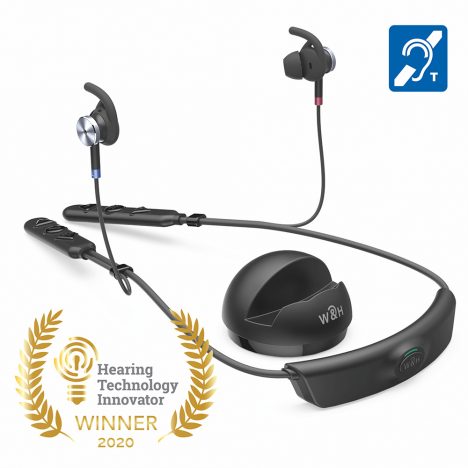
Audio communications company, Alango Technologies, is headquartered in Haifa, Israel, and has turned its focus to technologies improving access for the hearing impaired. The company’s BeHear ACCESS assistive hearing device was an honouree at the 2020 CES Innovation Awards. Their philosophy is that hearing impairment is a more universal phenomenon than most people readily admit, and use of hearing assistive technology should be as common as getting glasses.
Accessing audio isn’t entirely a matter of loudness or frequency enhancement. Sometimes the speed of speech makes it difficult to understand for people with age-related hearing loss, but also those with cognitive disabilities or language barriers. Even those who need extra time to write down information as they hear it.
One of Alango’s technologies, EasyListen, slows down incoming speech in real time.
“People with a hearing disability have difficulties listening to fast talkers and, eventually, at some age, all talkers seem fast,” explains Alango founder and CEO, Dr Alexander Goldin. “We can slow down speech and make it more intelligible. It’s a unique technology you cannot find today, even in expensive hearing aids.” BeHear ACCESS was designed for older people, who may have dexterity problems, with large buttons and simple controls.
The company’s EasyWatch technology allows viewers to understand fast talkers on TV, movies and streaming video by dynamically and selectively slowing down both the audio and video streams.
“One problem with hearing loss is that many people are not aware of having it,” says Goldin. “It takes, on average, seven years from the onset of the problem to the point where people become aware. And another three years when they start actually looking for help.”
To shorten this time, Alango has developed a hearing assessment kiosk, which can be put in waiting rooms or pharmacies to assess hearing – then provide customised audio feedback to give people an experience of what they are missing.
“Becoming aware of the problem is not enough to look for help. You need to know what you are missing. Hearing isn’t like vision – I can immediately understand that I can’t read a book or see a traffic sign. But if I don’t hear birds outside, they simply don’t exist for me. At our kiosk, we play video clips and allow people to switch the hearing amplification on and off.”
Getting the right solution in compensating for hearing loss isn’t just a matter of increasing loudness. Most gradual hearing loss is selective along specific frequencies. Increasing loudness brings up other frequencies, which may allow a person to fill in the gaps of what they are not hearing, but those missing frequencies are still likely to remain vacant. Alango uses a technology called multi-channel dynamic range processing. This takes into account all parts of the auditory system and tries to make up for it using the frequencies a person is still able to hear.
“Hearing loss cannot be compensated for completely. But we’re trying to get as close as possible.”
Alango’s technologies are designed for TVs and technologies people use every day. They have begun conversations with tech manufacturers about how to best integrate these new assistive features more widely.
Given the capabilities of most modern devices, we may eventually see smart devices taking into account that the ability to access video and audio is less consistent than we assume. A device integrated with its own hearing assessments – and automatic compensation for it – could be just around the corner.
PEOPLE WITH A HEARING DISABILITY HAVE DIFFICULTIES LISTENING TO FAST TALKERS AND, EVENTUALLY, AT SOME AGE, ALL TALKERS SEEM FAST
View the original article at https://online.bright-publishing.com/view/528237499/68/
3 ways to avoid using our products
Our goal is to democratize hearing and help make everyone’s life sound better. That’s why we make cutting edge hearing technology accessible to everyone who needs it. BUT, since prevention is the best cure, we’ve decided to share 3 easy hearing tips that will help protect you and the people you love from hearing loss in the future:
Hearing tip № 1
Love to spend time at restaurants and bars with loud music? How about rock concerts? Prepare to be our customer! The outbreak of Covid19 made it difficult to do many of the things we most enjoy. The good news is that, as vaccinations become more prevalent and quarantines are opened, we are going back to our old routines. The bad news is that loud music creates a dangerous level of sound which damages your ears.
Avoid being close to loudspeakers, especially for extended periods of time. Prepare in advance and use earplugs or give your ears a rest by going outside from time to time.
Hearing tip № 2
Working in a loud place without hearing protection? Welcome to our club!
Many people are exposed the sounds generated by machinery during their working hours. That means extended exposure, day after day, for years. Hearing loss occurs slowly, over time and so, for example, a construction worker might not notice there is a problem until it is too late. This is a case of better safe than sorry! Your employer should supply you with ear protection in the form of noise cancelling headphones, or at least earplugs. If they don’t, it’s worth purchasing your own earplugs. The expense is small but the benefit in avoiding accumulative damage is large.
Hearing tip № 3
Are you a parent to a teenager? It’s important to check whether or not they are blasting their eardrums, paving the way to a future of hearing loss.
Teenagers commonly prefer listening to music at the highest possible volume to lose themselves in the beat. If you can hear the music “spilling out” of their room or headset, it is too loud – but that also means you are in luck! It’s highly probable that your teenager is blasting his or her ears via their headphones and, unless you actively check, you will never know. Be active in teaching hearing health awareness. Your kids might think you are annoying now (they will for a million other things anyway), but they will thank you in the future.
Whenever possible, it is best to prevent difficulties, but if you are currently experiencing hearing loss, no worries! Our hearables offer a simple and accessible hearing enhancement solution that make life sound better. There is no reason to miss out on the activities and interactions that you love!
How to keep your ears young and your mind sharp
Did you know that hearing health impacts not only your physical, but also your emotional and mental wellbeing? Most people don’t realize how important, or how complex hearing is. It’s the one sense we just don’t think about.
We experience the richness of life through our ears and don’t even notice. If a grilled cheese sandwich doesn’t sizzle, it doesn’t arouse our appetite in the same way. When we want to describe a city as exciting, we tend to focus on the bustling crowd and the urban beat. For nature it’s the bubbling of a brook, chirping birds or rustling leaves.
Sound injects feeling into experiences that would otherwise be mute, flat, and distant.
When we truly understand how complex the hearing mechanism is, it is easier to understand why it is a good idea to make hearing health part of our self-care anti-aging regimen, to maintain mental and physical wellness.
Hearing loss and cognitive function are related. The correlation between untreated hearing loss and cognitive decline is well documented. Hearing loss makes social interaction more difficult, reduces the ability to connect with others, and often leads to isolation and decreased physical activity. This results in a marked decline in physical and even mental health. Recent research has uncovered that untreated hearing loss in mid-life is the most significant factor in the later onset of dementia(!).
This discovery is shocking, but it is also good news. Awareness of the significance of hearing health, coupled with the realization that hearing degradation is a natural part of life, is the first step to implementing mitigatory care.
The challenge is in overcoming the psychological and financial barriers to seeking care. 15% of the general population experience some level of hearing loss but because degradation is gradual, many don’t recognize the decline until it becomes serious. On average it takes 7 years from the moment a person accepts that he or she is experiencing hearing loss to the point where they start to seek treatment.
When hearing loss is ignored and left untreated, the auditory system is deprived of sound, resulting in subsequent atrophy of the auditory nerves and speech processing areas of the brain. In other words, untreated hearing loss goes beyond the ears to affect the brain itself. Unfortunately, technological solutions cannot fully compensate for the physical and mental capabilities which are lost when ears go untreated. Severe hearing loss needs to be treated with hearing aids or surgery, solutions that are both expensive and complicated.
So how can we attain the best possible hearing health and maintain a high quality of life, for as long as possible?
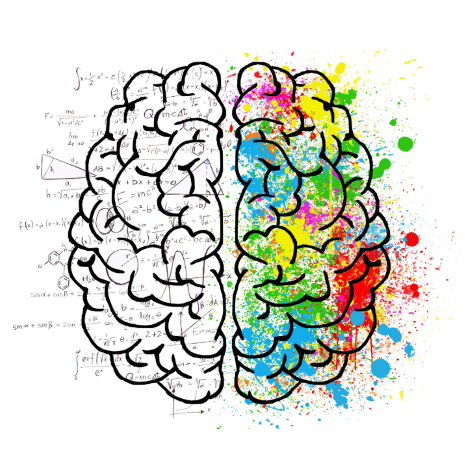
3 steps for keeping the ears young and the mind sharp
Step 1: Awareness
Understanding that hearing matters can help us protect ourselves and those we love. Try to notice if you or someone close to you frequently asks people to repeat themselves, has trouble making out conversations in noisy places, or gets frustrated trying to understand dialogue on TV.
Step 2: Prevention
Age-related hearing loss is something most of us will eventually experience ourselves or in someone close to us. Preventative care can help delay onset so it is a good idea to protect the ears whenever possible. Avoid environments that are extremely loud, especially when the volume remains intense over extended periods of time. But what if you are a factory worker? Or work in a bar? Prepare in advance! Use protective gear, a headset or earplugs. It’s better to be safe than sorry!
Step 3: Get hearing help early!
Implementing assistive hearing solutions sooner, rather than later, addresses hearing challenges when the problem is mild to moderate. This is a way to keep the ears young and the mind sharp and help avoid worse problems in the future. BeHear hearables for example, are hearing enhancement solutions that provide the audio quality of hearing aids at the price of competing hearables. BeHear’s sophisticated technology provides a customizable solution that enables the wearer to self-tune and control his or her own hearing without having to go through the complex and expensive process of getting a hearing aid.
Alango – Wear & Hear Named Finalist in What’s Next Innovation Challenge Sponsored by AARP Innovation Labs
Expert Judging Panel Will Determine Winners June 25 with Virtual Audience
Competition Focuses on Hearing Loss Innovative Solutions for 1 in 3 Older Americans
[Haifa, Israel], June 15, 2020 – Alango – Wear & Hear has been chosen as one of six finalists in the What’s Next Innovation Challenge sponsored by AARP Innovation Labs to be held June 25 during the 17th annual What’s Next Longevity Venture Summit virtual event. Finalists were chosen from a large field of applicants who offer the most disruptive solutions to drive adoption and usage of hearing aids for the millions over age 50 who have hearing impairment in the U.S.
“Our finalists in this competition are the top entrepreneurs helping to solve the challenges of hearing loss that impacts one in three Americans between ages 65-74,” said Mary Furlong, serial successful entrepreneur, author and producer of the What’s Next Longevity Summits. “The entrepreneurial talent from this competition not only gets the attention from event attendees who can fund or distribute their innovation and help scale their business, but also gets the chance to go on to national awareness thanks to our sponsor, AARP Innovation Labs. We’re thrilled Alango – Wear & Hear, a company with almost 20 years of experience in sound technology, was one of the finalists chosen.”
Each finalist will make their pitch to the expert judging panel consisting of longevity experts and investors: Dave Blanchard – Hamilton CapTel, Abby Levy – Primetime Partners and Jeannee Parker Martin – LeadingAge California. The judges will vote collectively to determine the winner who will earn a spot at the AARP Innovation Labs Grand Pitch Finale in Washington, D.C. later this year. Past finalists from the What’s Next Innovation Challenge, including Embodied Labs, have gone on to win the national Grand Pitch Finale.
“It is well known that untreated hearing loss is a huge health problem. As documented in the PCAST Report entitled ‘Aging America and Hearing Loss’ (Oct 2015), the traditional hearing aids industry has failed to provide a solution, so we decided to use our expertise in developing digital sound enhancement technologies to offer a disruptive alternative that works better, does more, looks modern, and costs much less. The result is our Wear & Hear brand of Personalized Bluetooth Hearing Amplifiers.”
Dr. Alexander Goldin, CEO and Founder of Alango Technologies
The What’s Next Innovation Challenge is one of the hallmarks of the What’s Next Longevity Summit where entrepreneurs join investors, businesses, analysts, nonprofits, media and other experts all focused on the $8.3 trillion longevity economy. The three-day What’s Next Longevity Venture Summit June 24-25, and July 21 offers on demand content including: more than 70 speakers, panel discussions, analyst research presentations and innovative virtual networking opportunities.
Produced by Mary Furlong, founder and CEO of Mary Furlong & Associates along with co-producers Lori Bitter, founder of The Business of Aging, and Sherri Snelling, CEO of Caregiving Club, top sponsors of the Summit include: AARP Innovation Labs, Ageless Innovation, Great Call, CareLinx, Great Call, Home Instead, Simple Meds, CABHI, Nationwide, VitalTech, Medterra CBD, CareMerge, Movano Inc. iN2L, Hamilton CapTel, Thrive, Ziegler-Linkage, WAHVE, My Family Channel and Bindix.
See the event agenda and full list of speakers and sponsors.
Register to attend the Summit here.
About Mary Furlong/Mary Furlong & Associates
Founded in 2003, Mary Furlong & Associates (MFA) is a strategy, business development and marketing company. A serial entrepreneur, Mary founded SeniorNet.org, and ThirdAge Media, prior to MFA. For 17 years, Mary has produced the industry leading What’s Next Boomer Business Summit and Silicon Valley Boomer Venture Summit, adding the Washington Innovation Summit and What’s Next Canada in recent years. Author of Turning Silver into Gold, How to Profit in the Boomer Market and The MFA Longevity Market Report, Mary has been recognized by ASA, Fortune, Time and as one of the top 100 Women in Silicon Valley. She is an adviser to the Ziegler LinkAge Fund, CABHI and numerous start-up companies in addition to her private client practice. For more info, visit: www.maryfurlong.com
About Alango – Wear & Hear
To combat the “silent epidemic” of worldwide hearing loss, Alango Technologies, Ltd., a leading supplier of sound enhancement technologies for voice communication established in 2002, launched the Wear & Hear line in 2015. Although untreated hearing loss can lead to isolation, depression, cognitive decline, and even dementia, less than 25% of people in developed countries (and less than 3% in low income countries) use hearing aids. The Alango Wear & Hear line was created to disrupt the conventional treatment of hearing loss. Its personalizable hearing amplification solutions provide stylish, affordable, and self-tuned listening experiences to people with mild-to-moderate hearing loss. For more info, visit: www.WearAndHear.com
World Hearing Day: March 3
This year’s theme is “Hearing for life: Don’t let hearing loss limit you”
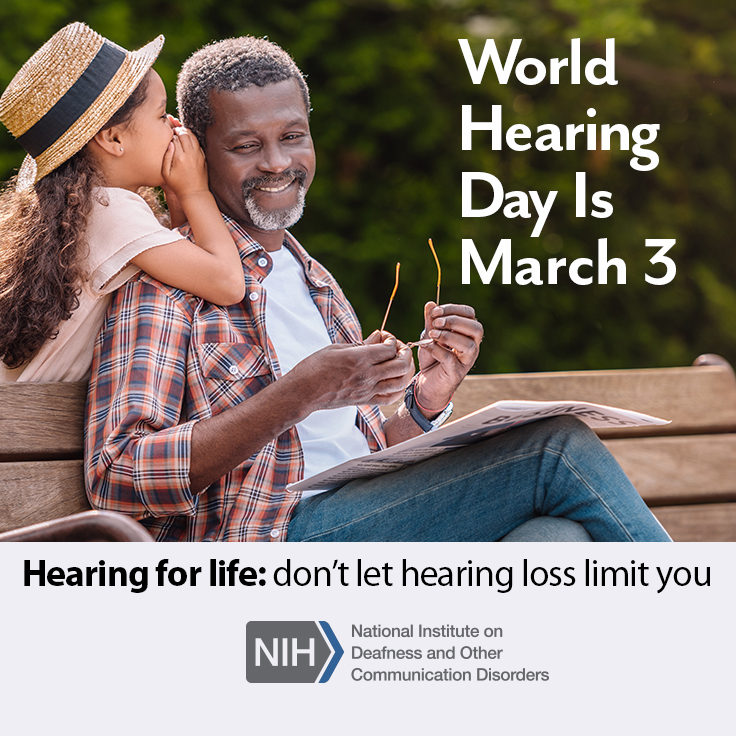
Every year on March 3, WHO, the health agency of the United Nations, engages organizations in World Hearing Day public awareness activities. This year’s theme, “Hearing for life: Don’t let hearing loss limit you,” highlights the importance of hearing loss prevention and timely and effective interventions for those who are deaf or hard-of-hearing.
We at Alango – Wear & Hear are pleased to join in this effort. Read the full article from the National Institute on Deafness and Other Communication Disorders by clicking this link. Learn more about age-related hearing loss by clicking this link. Do something about your own hearing loss by trying out our affordable, personalizable, stylish, multi-functional hearing amplification products using the 30-day “Buy & Try” policy in our Web store.
Alango Founder Describes His Vision for Better Hearing
What inspired a computer engineer with expertise in sound enhancement to tackle the “silent epidemic” of untreated hearing loss?
Dr. Alexander Goldin, the Founder and CEO of Alango Technologies, was recently interviewed by Tyler Gallagher of Authority Magazine. The following is an excerpt from the full article, which is posted on both Medium.com and Thrive Global.
Dr. Goldin states: Here is a sad statistic from World Health Organization: in 2001, roughly when I started analyzing the situation, there were 250 million people worldwide with disabling hearing loss. Today, this number has increased to 466 million. And, it is estimated that by 2050 over 900 million people will have disabling hearing loss.
If we provide an affordable, self-administered solution to hearing loss, we will help children to succeed more in learning, adults to be more efficient at work, and the elderly to stay active and connected to other people. We will reduce the huge cost of unaddressed hearing loss and use that money to make other aspects of human life better, I hope.
Dr. Alexander Goldin, Founder & CEO at Alango Technologies
When asked What do you need to lead this technology to widespread adoption? Dr. Goldin responded:
“When people are asked about hearing loss and a treatment for it, they will answer “hearing aids” even though, as I mentioned earlier, worldwide adoption rates for hearing aids are incredibly low. We at Alango Technologies are creating a new category of hearing enhancement devices that are affordable, versatile, stylish, and self-tunable. Unfortunately, most hearing-impaired users are not aware of this option. We need to inform them. And, after people hear about something new, it takes them a long time to start believing in it. We need to shorten this process and that is where we need help. I hope this interview will give us such help.
Bottom line: Won’t you help us in our efforts to get the word out? Share this article, or simply mention to someone who could benefit that affordable, versatile, stylish, and self-tunable hearing enhancement devices exist today. It’s bound to be life-changing.
Do You Think Your Hearing is Fine?
If you are between the ages of 20 and 69 – you probably suffer from hearing loss. But there is good news – you can check it by yourself and do something about it.
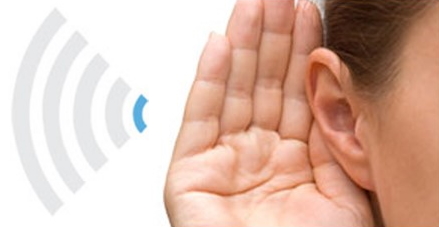
If you think your hearing is fine, think again. A federal study reports that about a quarter of the people between the ages of 20 and 69 who think their hearing is “good” or “excellent” are in fact showing signs of hearing loss.
Hearing loss is often attributed to noisy work environments, or to aging. The Centers for Disease Control and Prevention (CDC) reports that 24 percent of hearing loss is due to loud workplaces.
What surprised us was we found many people with evidence of noise-induced hearing damage who don’t have noisy jobs, who got that damage from their home or community.
Dr. Ann Schuchat, acting director of the CDC
Loud noises – from sirens to lawnmowers and rock concerts to sporting events – can permanently damage hearing. That damage builds up over time, and once it’s lost, it’s lost forever.
The study finds that the loss often starts early in life. Approximately 20 percent of Americans in their 20s have lost some ability to hear the softest sounds. The effect is much more pronounced in men than in women. And a quarter of people who have lost some hearing don’t even know it.
Hearing loss is especially problematic for older adults, who can find themselves socially isolated when they can’t hear what people around them are saying.
The CDC also notes that chronic exposure to noise has been associated with increased stress, anxiety, depression, high blood pressure, heart disease, distractability, and annoyance.
Bottom line: It’s best not to assume that your hearing is fine. The good news is it’s very simple to check it by yourself. There is a built-in hearing assessment in the BeHear NOW personalizable hearing amplifier (which also looks and functions just like a Bluetooth headset). With our 30-day “Buy & Try” return policy, you have nothing to lose. And with our upcoming “Black Friday” special offers there is no time like the present to do something about it!
How to Survive a Family Gathering When You Have Hearing Loss
5 tips for enjoying the upcoming holiday season when your hearing is impaired

Having hearing loss can sometimes make you feel left out of conversations.
It’s easy to turn down invitations to parties and events, or to withdraw from group conversations because of hearing loss, but it doesn’t have to be that way.
Here are 5 tips for enjoying the upcoming holiday season:
- Determine who might not know about your hearing loss. Make it a point to connect with those people during the celebration. Tell them about your hearing loss and that you want to hear what they have to say. Ask them to get your attention when they want to communicate. Try using this common “drill”: “Please look at me, speak slowly and forgive me if I ask you to repeat what you said.” Have a laugh about it. They will appreciate your thoughtfulness.
- Check your expectations, fears and concerns at the door. It’s Thanksgiving! The whole family is here, and you want nothing more than to participate in it all. You already know that the day will not go perfectly, and you may miss a lot of the news and conversation. That said, you can always get contact information for those with whom you wish to continue communicating. Emails, texts and cell phones now afford us a variety of convenient and accessible ways to communicate – just one more thing for which to be thankful.
- Double, or single-sided deafness? Location, location, location. Sit in the middle of the table and try your best to hear what’s going on. Or seat yourself at a good angle to at least see everyone. If you can, have some family members who know how to communicate with you (and who won’t place extraordinary demands on your hearing) sit near you so you can have your own conversation circle.
- Save the day for a family member with hearing loss. Let them know you know that they are hard of hearing and offer to help them communicate with others if they need assistance. You can be their translator – stand or sit near them to help with conversations. Make a point of spending some time chatting to make them feel part of the celebration.
- Try using a personalized hearing amplifier. A headset from the Wear & Hear line can give you the boost you need to take an active part in holiday conversations. These devices are self-tunable, lightweight, and very comfortable. When not in use, the magnetized ear buds will hold the headset in place on your chest (like a pair of glasses). They let you be in charge of your own hearing!
